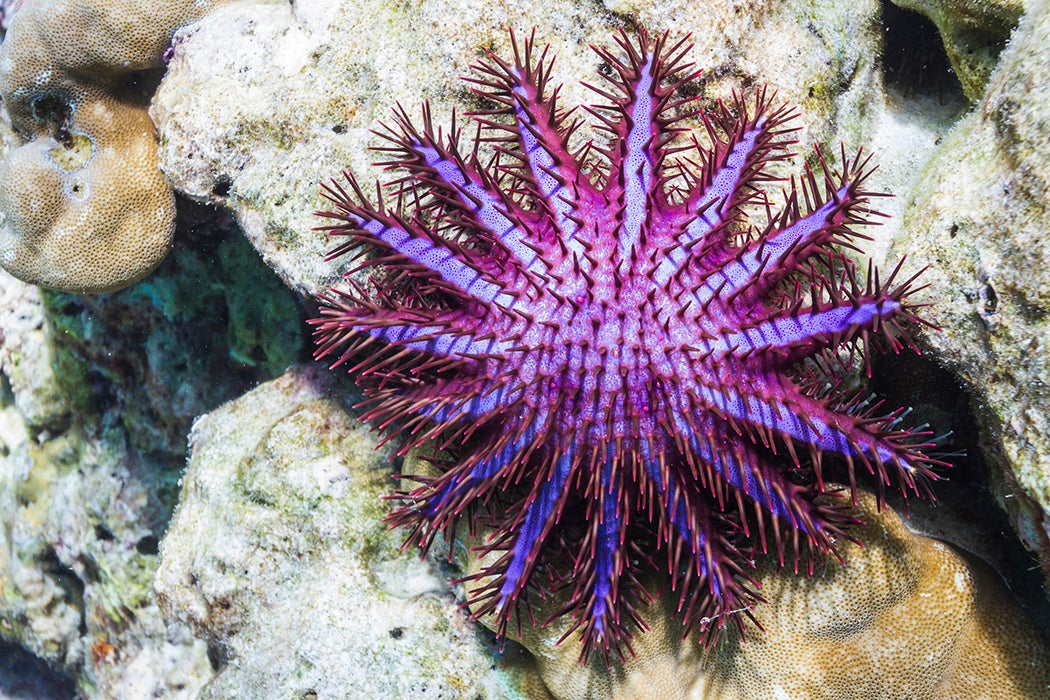Australia’s iconic Great Barrier Reef is under attack, but this time people aren’t the problem (at least not directly). The reef faces a threat from a massive outbreak of crown-of-thorns starfish. Around a foot across (sometimes considerably larger) the crown-of-thorns starfish resembles a squashed sea urchin with up to 21 arms. These voracious creatures, which are found across much of the Pacific and Indian Oceans, feed on coral. Left unchecked, crown-of-thorns starfish can radically alter the structure of a reef.
Even without an outbreak, each crown-of-thorns starfish can eat up to six square meters of coral per year. When there are no crown-of-thorns starfish present, reefs are often dominated by massive spreading corals. At normal densities, crown-of-thorns starfish help keep the coral in balance, thinning certain species and providing room for others.
Small perturbations, however, can throw off the balance. Nutrient enrichment, often a result of farm runoff, seems to aid the larval crown-of-thorns starfish and is associated with outbreaks. One prediction of climate change is more frequent heavy rain events, leading to more runoff. At the same time, warmer temperatures weaken or kill corals, leaving them more susceptible to crown-of-thorns starfish damage. Often, the defending corals succumb first, and undefended corals can be damaged beyond recovery by crown-of-thorns starfish. A combination of warmth and runoff can lead to the unsustainable combination of weak coral and excess starfish. In the wake of an outbreak, algae typically replaces the damaged coral. The population of algae-eating fish surges, at the expense of coral-eating fish. The impact of a starfish outbreak goes beyond the coral community.
Can the reef bounce back? Crown-of-thorns starfish outbreaks are not new and have occurred throughout the Indo-Pacific. In many cases, coral cover expanded more rapidly immediately following an outbreak, and under normal conditions reefs could at least partially recover in a decade or two. However, there was huge variability in the time to recovery, ranging from as little as five to as many as a thousand years or more. The disparity is due to the configuration of particular reefs, and other factors such as pathways for coral to disperse. Some reefs might not be able to recover at all.
Unfortunately, the reef needs relatively calm years in order to recover from a crown-of-thorns starfish outbreak, but additional stressors such as warming temperatures, runoff, overfishing, and overdevelopment are not going away. To help, divers thin the crown-of-thorns starfish population. But despite efforts, the starfish hoard marches on. Time will tell how the reef weathers the storm.







